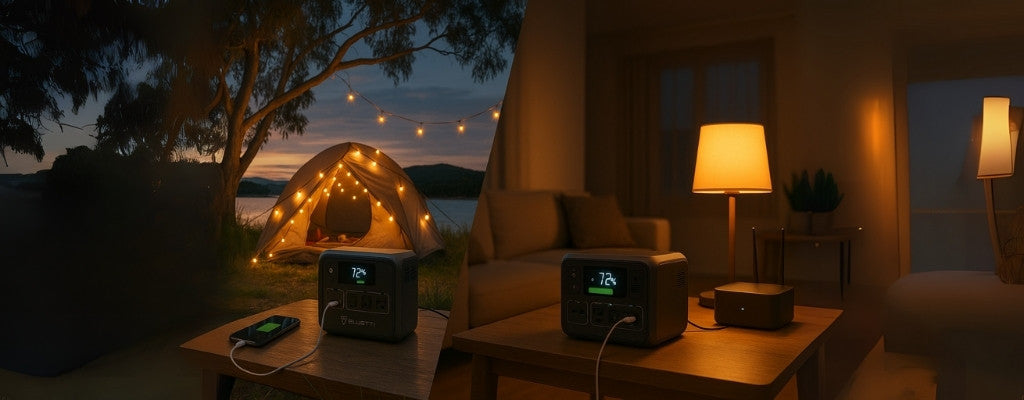
What Size Power Station Do I Need?
Ever hit the road, packed the swags, and brought the snags—only to realise you’ve got no way to charge your phone or keep the beers cold? Here’s the quick answer: You’ll need a portable power station that can handle the total wattage of your gear and run it for the hours you need. Stick around, and we’ll help you avoid blowing cash on the wrong unit—or ending up in a standoff over who gets the last USB port.
Not sure which power station is right for you?
Take the quiz!
How to Choose the Right Portable Power Station
Understanding Your Energy Needs
List of Essential Appliances and Devices
Start by listing all the appliances and gadgets you plan to use. Are you powering just phones and lights or also a fridge, fan, or power tools? The more you plan to plug in, the higher your power demand.
Calculating Wattage Requirements
Each device has a wattage rating. Add them up to estimate the power you’ll need at any given time. For instance, a phone (10W), a laptop (50W), and an LED light (10W) running together require a minimum of 70W output capacity.
Peak vs. Average Power Draw
Some appliances spike in usage when they start. Fridges and power tools can have high startup wattage. Always choose a portable power station with headroom above your total to cover those peaks.

Portable Power Station Types and Capacities
Comparing Size Options
Small Capacity (for Camping, Emergencies)
200–300Wh units are compact and ideal for charging phones, running small lights, or keeping fans on during hot nights outdoors. Perfect for short trips or backup needs.
Medium Capacity (for Home Backup, Off-Grid Living)
500–1000Wh is great for multi-day camping, blackouts, or moderate use. These can support fridges, laptops, and several devices at once.
High Capacity (for Extended Off-Grid Use, High-Power Appliances)
1500Wh or more covers heavy-duty needs like CPAP machines, coffee makers, and even microwaves. Great for remote areas or extended travel without access to mains power.
Other Generator Alternatives
Gas-Powered Generators
Reliable and powerful, but noisy and not suitable for indoor use. Best for worksites or emergencies.
Diesel Generators
Efficient over longer periods and preferred for high-demand environments. Bulkier and pricier but long-lasting.
Solar Generators
Combine solar panels with a battery and inverter. Quiet, emission-free, and ideal for sustainable off-grid setups—especially if you travel where sunshine is abundant.

Portable Power Station Safety and Selection Tips
Evaluate Features and Budget
Balancing Performance and Cost
Pick what suits your needs—not what sounds impressive. High-capacity units cost more, but you may not need them for a simple setup.
Battery Type and Capacity
Look for lithium-ion or LiFePO4 batteries for better safety and longevity. Battery size, measured in Wh, tells you how long it’ll last.
Charging Options (AC, Solar, Car)
Top-tier power stations let you charge via wall outlets, solar panels, or a car port. Ideal if you’re on the move or in remote areas.
Installation, Maintenance, and Environmental Factors
Safety Precautions for Generator Use
Carbon Monoxide Poisoning Prevention
Battery stations emit no gases, but combustion generators must always be ventilated to prevent dangerous CO buildup.
Choosing Eco-Friendly Options
Opt for models with LiFePO4 batteries, solar charging, and long-life cycles to reduce environmental impact over time.


